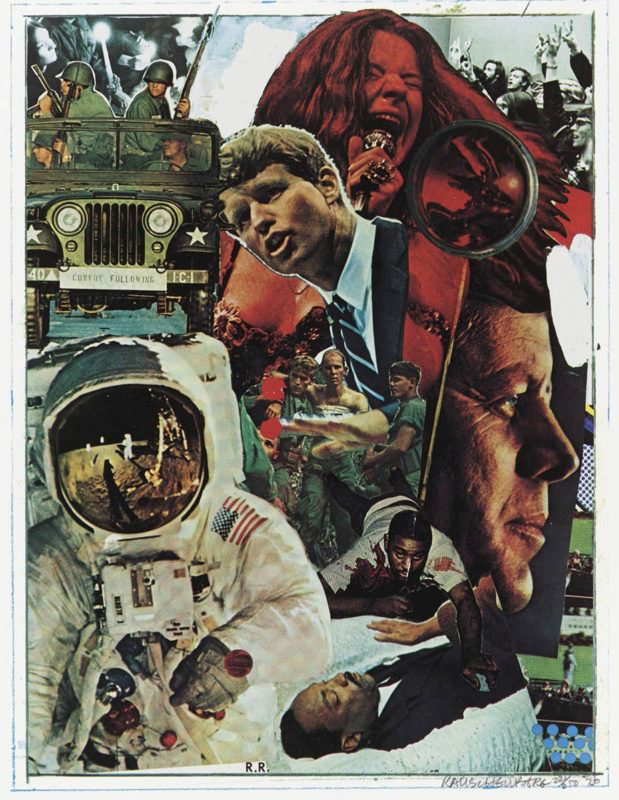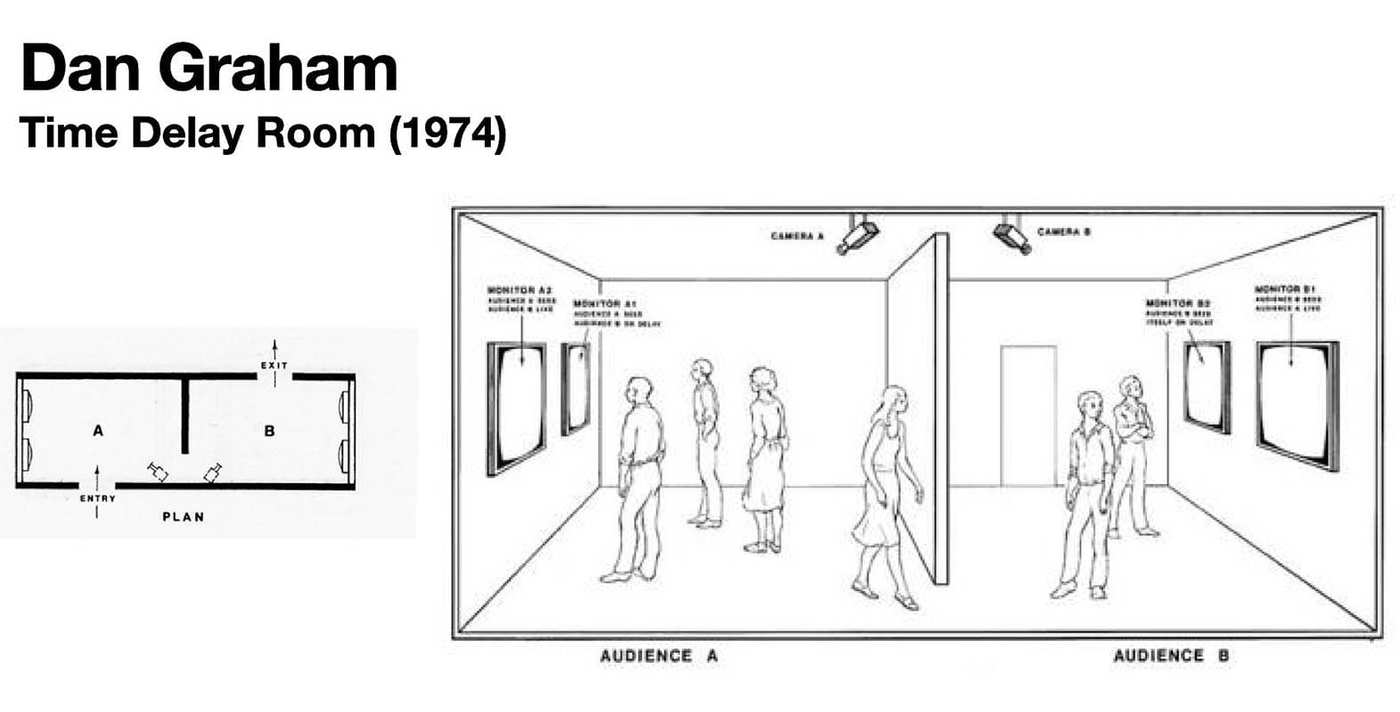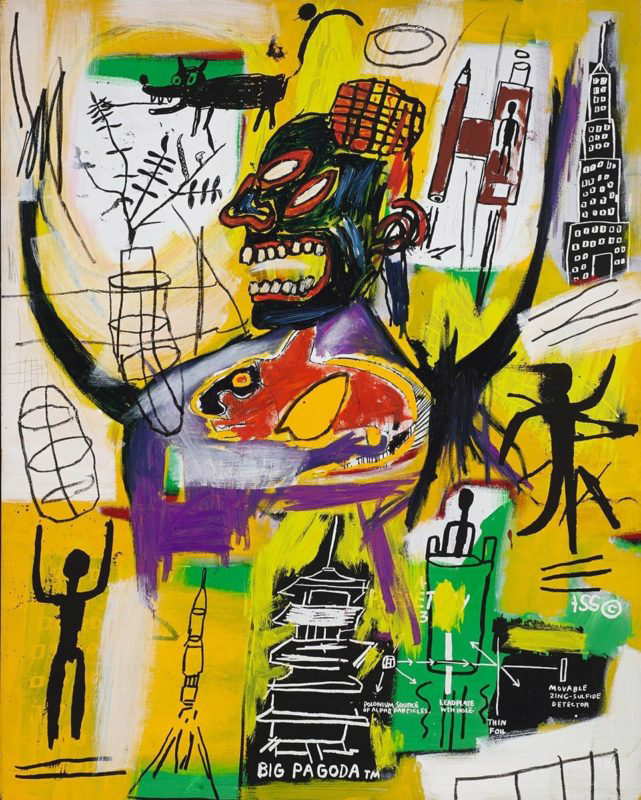What Is One Difference in the Way Modernists and Postmodernists Viewed Older Art Forms?

From an art-historical indicate of view, the 20th century can be roughly divided into modernistic and postmodern art. Basically, these are ii aspects of the same movement. Both modernism and postmodernism were strongly influenced in their spirit past the Enlightenment . Through the Enlightenment, science and reason had triumphed over tradition and faith. Furthermore, the advancing industrialization brought with information technology an untiring conventionalities in progress. All that finally culminated in the First Earth War and Second World War, the almost horrible and influencing historical events in the 20 th century. Both wars were to completely change social life and as well the art motility.
What all this meant exactly for art in the modern and postmodern age is now explained with half-dozen facts and 13 artworks.
1. Modernism And Postmodernism: Different Periods In One Century

It is always somewhat difficult to ascertain the time frame of fine art epochs as well as to describe an exact line betwixt one epoch and some other. Withal, it tin be said that modern fine art was an art that was created around the end of the 19th and up to the middle of the 20th century. At about this betoken, postmodernism replaced modernism.

Translated into artworks, modernism tin can be idea of as from the realism of Gustave Courbet to the activeness painting of Jackson Pollock . Postmodernism came upwardly in the middle of the 20 th century, around 1950, and has produced artists similar Jean-Michel Basquiat .
ii. They Both Include Many Dissimilar Art Forms

Modern fine art and postmodern fine art take a great bargain in common: both epochs cannot be reduced to a single art class or style, nor can they be reduced to one theory. Rather, the two eras are famous for having produced different styles and ideas about art. Typical artforms of modernism are impressionism , expressionism , cubism but likewise fauvism . In the postmodern era, newer forms of art have emerged, such as Land Fine art, Body Art, Conceptual Fine art , Pop Art and many more than.

This range of art could be demonstrated, for instance, by a painting by the Impressionist Claude Monet and a painting by Popular art artist Andy Warhol . Both in a way similar in their motif, the technique as well as the colors, are presented totally differently.
3. Postmodernism: Heterogeneity Replaces Homogeneity As The Basic Principle
Past having experienced the Enlightenment in the recent past, seeing progressive industrialization underway and an increasing detachment from creative institutions, traditions and norms, modernism was particularly characterized by an unquestioned belief in progress. Artistically, this will to further evolution showed itself in graphic experiments and also in the form of reduction as artist El Lissitzky , for example, exercised information technology.
Are you enjoying this article?
Sign upwardly to our Gratis Weekly Newsletter
Please bank check your inbox to actuate your subscription
Give thanks you!

It was particularly Jean-François Lyotard 's book La Status Postmoderne (1979) that was to put an terminate to this conventionalities in progress in postmodernism. In his writing, Lyotard replaced a universally valid and accented explanatory principle (God, subject, etc.) with a multitude of language games that offered various explanatory models. Lyotard turned confronting a sure historical form of rationality based on the exclusion of the heterogeneous. As a result, a tolerant sensitivity to differences, heterogeneity and plurality increased and with information technology the ability to suffer incompatibility.

A heterogeneous agreement of the world too brought with it many critical works of art, including Barbara Kruger'south work critical of capitalism. Other works were influenced past the fight for civil rights in the The states or the 2d wave of feminism, for instance.
4. Postmodern Art: An Expanded Agreement Of Art

This heterogeneity initially manifested itself quite formally in postmodernism: the classical media of art such as sheet or paper were replaced by new media. Artists worked more and more with everyday materials and mixed them with classical forms of art. Collages, for example, were very popular in the 1950s and 1960s. But also Body Art, which uses the own body as a medium of fine art, was such a new art course. More and more than, artists as well moved away from any object every bit their medium of art. This is how performance fine art, for example, came near.

The artist Marina Abramovic is withal i of the nigh famous functioning artists of all time. She started her piece of work in functioning fine art when postmodernism started to come up. Abramovic too represented a somehow nihilistic way of art that tin can be seen every bit typical for postmodern art and the period of the second half of the xx thursday century. In her performance Rest Energy (1980), Abramovic performed together with her partner, the performance artist Ulay .
The artist explained her piece of work later on as follows: "I was not in charge. In Rest Energy nosotros really held an pointer on the weight of our bodies, and the arrow is pointed right into my heart. We had two modest microphones well-nigh our hearts, and so we could hear our heartbeats. Every bit our operation was progressing, heartbeats were becoming more and more intense, and though it lasted merely four minutes and ten seconds, I'm telling you, for me information technology was forever. It was a functioning about the consummate and full trust."
5. Modern Art: Form and Function, Postmodernism: Takeover Of 'The Thought'

Conceptual fine art, as defined past the American artist Sol Lewitt , provided a particularly radical arroyo to modern art. While at the starting time of the 20th century, creative person movements such equally the Bauhaus in Europe placed the function of art in a higher place its form, Sol Lewitt made the idea of the producing factor of art. In his essay Paragraphs on Conceptual Art (1967) he writes: "When an creative person uses a conceptual form of art, information technology means that all of the planning and decisions are fabricated beforehand and the execution is a perfunctory thing. The thought becomes a automobile that makes the art."

In this sense, artist Joseph Kosuth had already reflected on the different codes of one chair in his conceptual artwork 1 and Three Chairs (1965). The piece of work of art itself is non unique in Kosuth's work; it is the artist's reflection on Plato's allegory of the cave that completes the work of art here.
6. Postmodernists Rejected The Idea Of An Objectively Comprehensible Reality
Postmodernists like Lyotard, Heidegger, Derrida but also phenomenologists like Lacan or Merleau-Ponty critically examined the concept of an considerately perceivable reality. From theorists like the to a higher place-mentioned come up ideas which assume that there is no objective truth and identity. Newly emerging theories of perception were also addressed and processed in the fine art of postmodernism.

An interesting work in this context comes from the New York concept and video artist Dan Graham . In his complicated work Two Filibuster Room (1974) fabricated of mirrors and screens, Graham confronts visitors to his work with the role and limits of their own perception. In his ii rooms, each equipped with two screens and cameras, Dan Graham plays with the technical and homo observation of his own being. A time delay in the transmission of the camera images to the screens imitates man perception.
Modernism Vs. Postmodernism: Canvas To Space-consuming Installation

I admit that this text represents a rather fast ride through the history of art from well-nigh two centuries. Simply this quick run-through and the juxtaposition of modernism and post-modernism in six facts clearly shows unlike things. Firstly, it is clear that the movement that modernism and postmodernism are making in art as a whole is a movement in the sense of evolution. Nonetheless, this movement takes identify differently in the ii eras. The modify in form is also the almost obvious. While at the beginning of modernism artists still painted on canvass, postmodernism has produced works of art that are absolutely space-filling, every bit the last piece of work by Dan Graham shows.
Modernism vs. postmodernism is the belief in progress versus the criticism of progress and a plough towards plurality and heterogeneity. It is also the assumption that in that location is more one objectively perceivable reality.
Source: https://www.thecollector.com/modernism-vs-postmodernism/